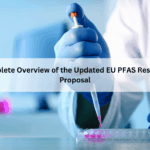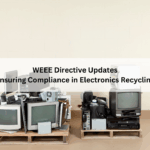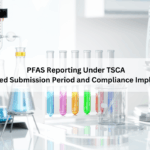On March 31st 2015, European Commission adopted a new directive (Directive (EU) 2015/863) to amend the existing EU RoHS 2 directive (2011/65/EU). The new directive adds 4 substances to the existing list of 6 restricted substances under RoHS2. The new directive was officially published on 4th June 2015 and entered in to force on 24thJune 2015, 20 days after publishing. The restrictions basis the directive will take effect beginning July 22, 2019 for all Electrical and Electronic equipment except Medical Devices (category 8) and Monitoring & Control equipment (category 9). Note: Category 8 & 9 will have an additional two years to comply (by 22 July 2021).
At the time of adoption of 2011/65/EU directive in 2011, European Commission categorized 4 substances as priority substances to be assessed for next inclusion under RoHS2 restricted substances list. These 4 have now been included and are listed below:
| Substance Name | CAS Number | Maximum concentration in homogeneous material* |
| Bis(2-ethylhexyl) phthalate (DEHP) | 117-81-7 | 0.1% |
| Benzyl butyl phthalate (BBP) | 85-68-7 | 0.1% |
| Dibutyl phthalate (DBP) | 84-74-2 | 0.1% |
| Diisobutyl phthalate (DIBP) | 84-69-5 | 0.1% |
| *The maximum concentration values apply to each homogeneous material rather than a product or a part itself. | ||
Where are the 4 substances used?
DEHP, BBP, DBP and DIBP are primarily used as Plasticizers to soften PVC (Polyvinyl Chloride). PVC is commonly used for wires and cables and also can be found in some electronic components or plastic parts. Below are the areas where the 4 phthalates are commonly found.
- Cable and Wiring
- Flooring, wall covering and roofing
- Plastic films
- Bags, Brief-case, Gloves, blood bags
- Tablecloth, curtains, shower curtains & similar items
- Headphones
- Water beds & Air mattresses
- Wallpaper/Tapestry coated with PVC
- Footwear
- Bathing equipment
- Accessories on textiles
- Consumer goods packaging
- Car Care products
- Cosmetics (nail polish, hair spray, perfumes)
- Toys and childcare articles
- Paints and Seals
- Sealants and Adhesives
- Lacquer manufacturing
- Environmental pollutant
- Food chain and in the human diet
- Insulation for cables
- Solvent in glow sticks and hydraulic fluids
- Solvent in capacitor dielectric fluids
- Ceramics for electronics
- Building and Construction
- Dialysis equipment, dialysis bags and tubing
- Automotive products
- Food conveyor belts
- Coatings
- Printing inks
- Lubricants
- Plugs and Shock absorbers
- Suspension agent for solids
- Nitro cellulose plastic
- Explosive material
Impact of Directive (EU) 2015/863
The new directive comes in as a release this year, but the substances in question had been already considered to be of hazardous impact since 2011, as per European Commission (RoHS2 & REACH).
In the year 2011, European Commission had prioritized the above 4 substances to be analyzed for the next inclusion under RoHS 2. Also the REACH Candidate List by 2011, included DEHP, BBP, DBP and DIBP. Subsequent to these directives, manufacturers took steps to assess the parts and materials that require phthalates substitution from their products thereby reducing the demand for the chemicals in the market and initiating action for removal.
As on date there are very few producers in Europe who manufacture or import these phthalates so the new directive comes in as a second chance for those who still haven’t prepared themselves to avoid these phthalates. EU has now given time till 2019 to implement the restriction.
Thus the impact of the directive will not have an extreme effect but medical device manufacturers will need to give more attention to their product. The relative impact of the directive will also be seen more in case of medical device manufacturers rather than electronic and electrical manufacturers because the application of the above mentioned phthalates is mainly seen in the medical and consumer segment.
This ensures that the impact of the new directive will not be extreme and manufacturers that have REACH SVHC information from their suppliers have a head start. So manufacturers have got enough time to start acting for avoiding these substances.
What manufacturers should do?
EEE manufacturers and their suppliers have over four years to prepare to become compliant to this secondary legislation on RoHS 2. They have to ensure that, in the manufacturing process/ supply chain, these phthalates are not used more than the allowable limit to keep the products compliant to EU’s RoHS 2. As of now most of the manufacturers have collected the RoHS 2 related certificates, supporting documents and also ensured preventive actions or found alternative options to make sure the 6 substances are not present in their products as per the previous requirement of RoHS 2. Now they have to go back and put the same effort to collect the documents and complete the procedures to avoid the new phthalates from the already compliant products.
Most of them have a well-defined compliance management process and in certain cases have engaged with an expert data service provider to do the same, if not it’s the perfect time to make such arrangements. In any case, we would like reiterate that this particular directive will be easier to manage and implement, given that 70% of the market has already taken preventive steps.





